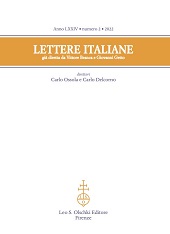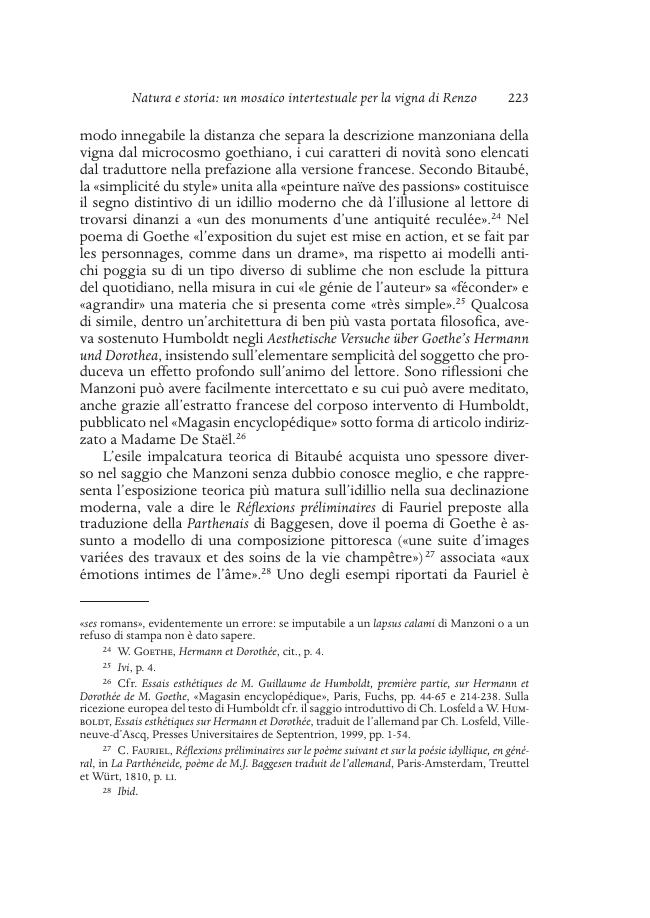Natura e storia : un mosaico intertestuale per la vigna di Renzo (PS, XXXIII)
P. 216-230
Il saggio muove dal rapporto intertestuale del XXXIII capitolo dei Promessi sposi con il Waverley di Scott (una vera e propria riscrittura, come ha mostrato Ezio Raimondi) per ricostruire il percorso di Manzoni verso il romanzo e la sua posizione all'interno del dibattito sull'idillio aperto dalla traduzione francese dell'Hermann und Dorothea di Goethe. A una lettura attenta, il capitolo XXXIII e in particolare l'episodio della vigna di Renzo recano le tracce di una più fitta intertestualità che sembra chiamare in causa, per antitesi, non solo il poema di Goethe e la Parthenaïs di Baggesen tradotta da Fauriel, ma anche le Études de la nature di Bernardin de Saint-Pierre e René di Chateaubriand.
Il confronto con i modelli letterari più significativi del Tournant des Lumières consente di mettere in luce la sostanza del realismo psicologico manzoniano, che attraverso la moltiplicazione dei punti di vista mira all'autonomia del personaggio e del suo mondo interiore. [Testo dell'editore]
The essay moves from the intertextual relationship of the XXXIII chapter of Promessi sposi with Scott's Waverley (a true rewriting, as Ezio Raimondi has shown) to reconstruct Manzoni's path to the novel and his position within the debate on the idyll opened by the French translation of Goethe's Hermann und Dorothea. On close reading, Chapter XXXIII and in particular the episode of Renzo's vineyard bear the traces of a denser intertextuality that seems to call into question, by antithesis, not only Goethe's poem and Baggesen's Parthenaïs translated by Fauriel, but also Bernardin de Saint-Pierre's Études de la nature and Chateaubriand's René.
The comparison with the most significant literary models of the Tournant des Lumières allows us to highlight the substance of Manzoni's psychological realism, which through the multiplication of points of view aims at the autonomy of the character and his inner world. [Publisher's text]
Is part of
Lettere italiane : LXXIV, 2, 2022-
Articles from the same issue (available individually)
-
Information
DOI: 10.1400/291293
ISSN: 2035-6315



